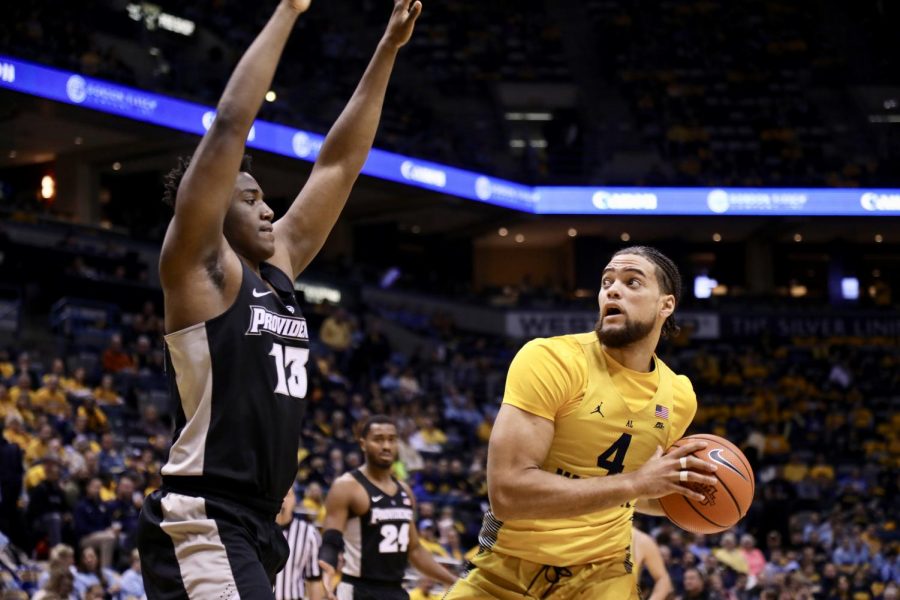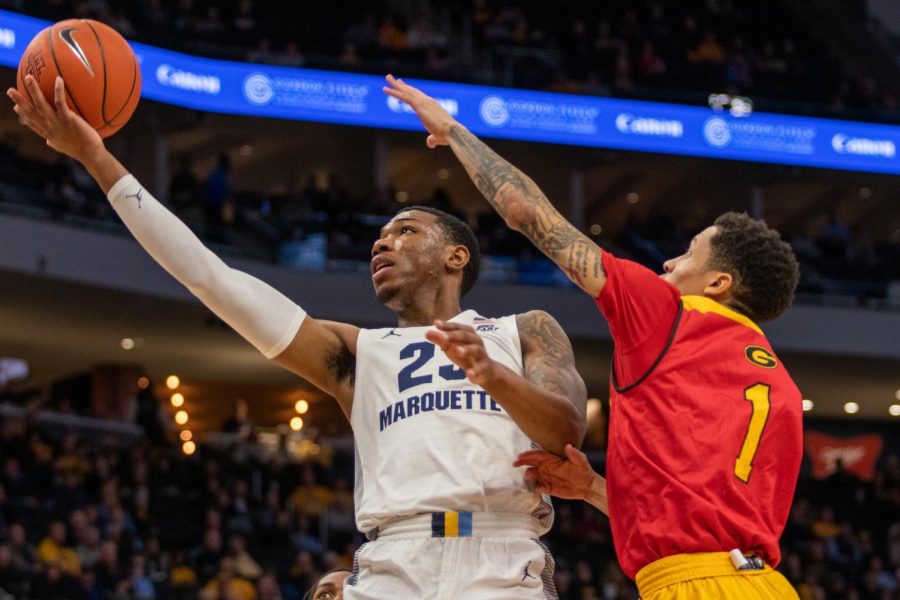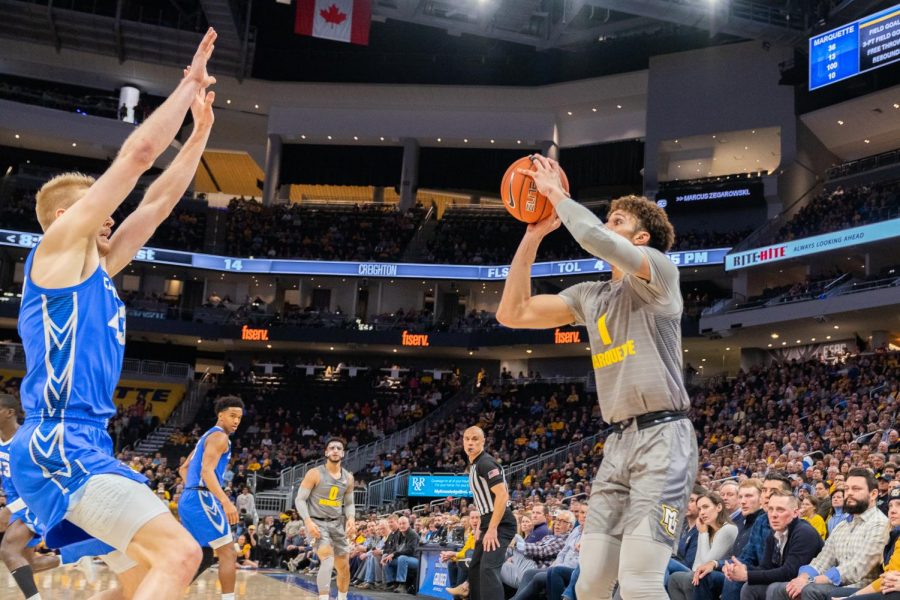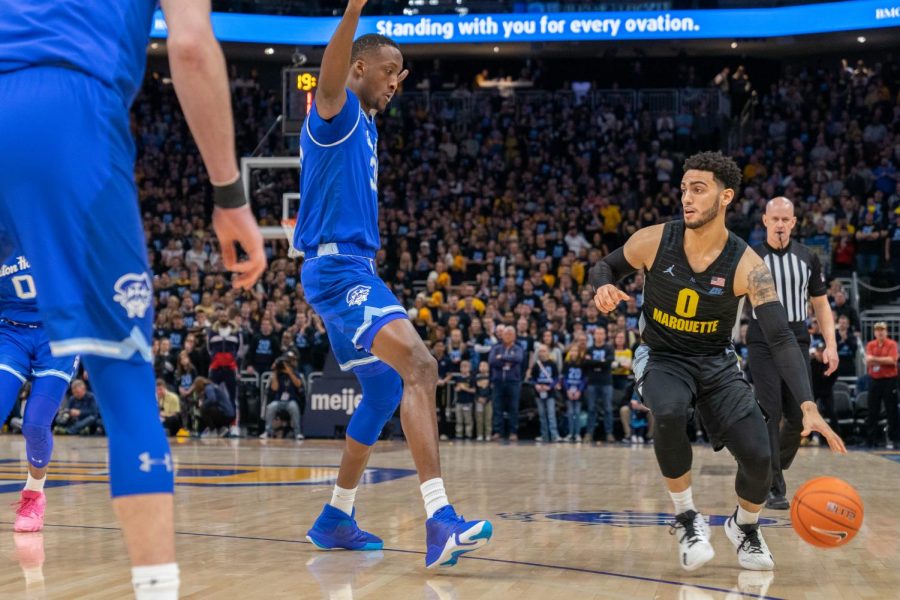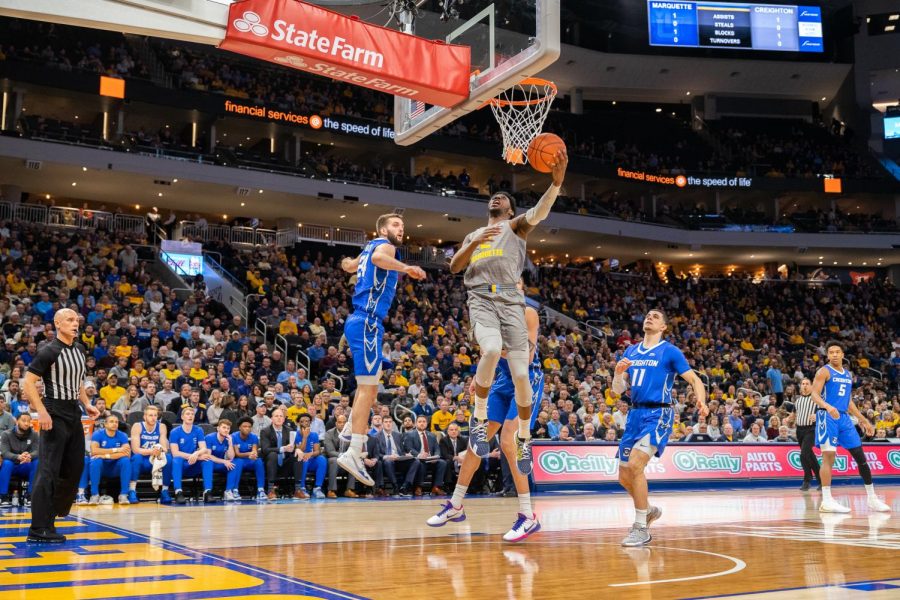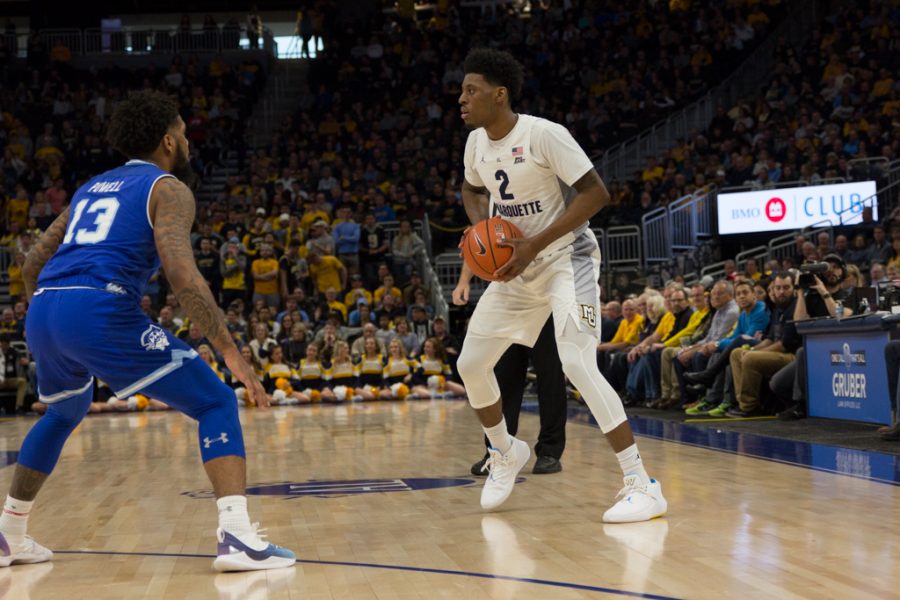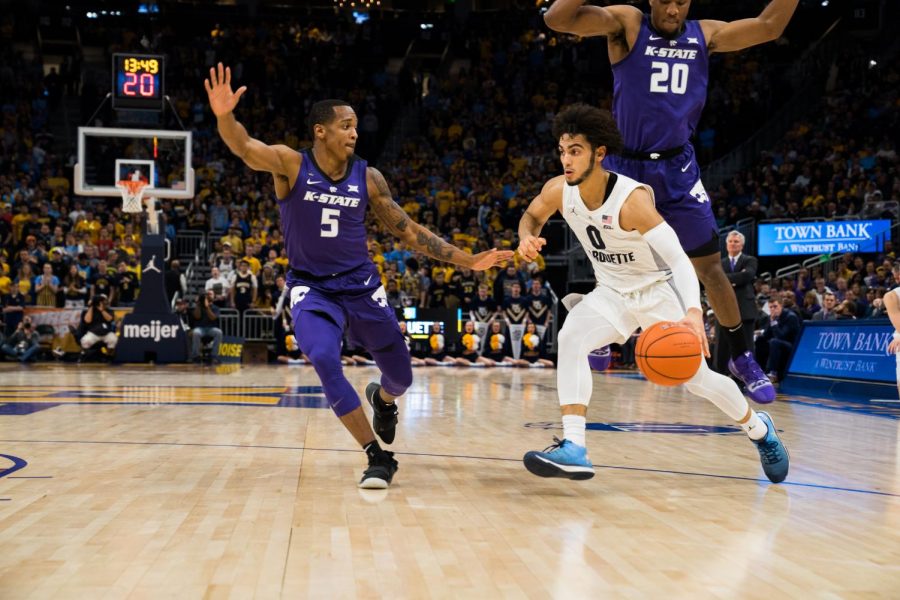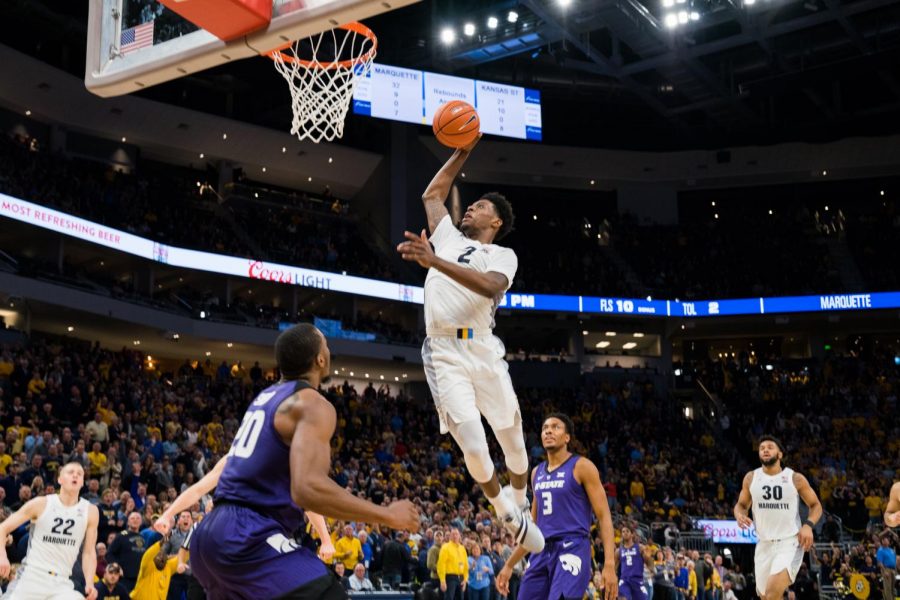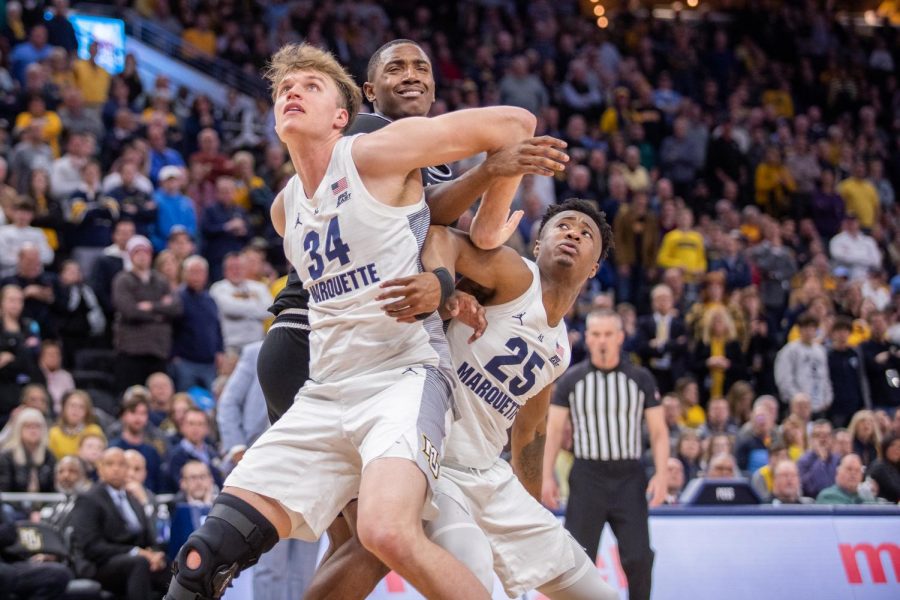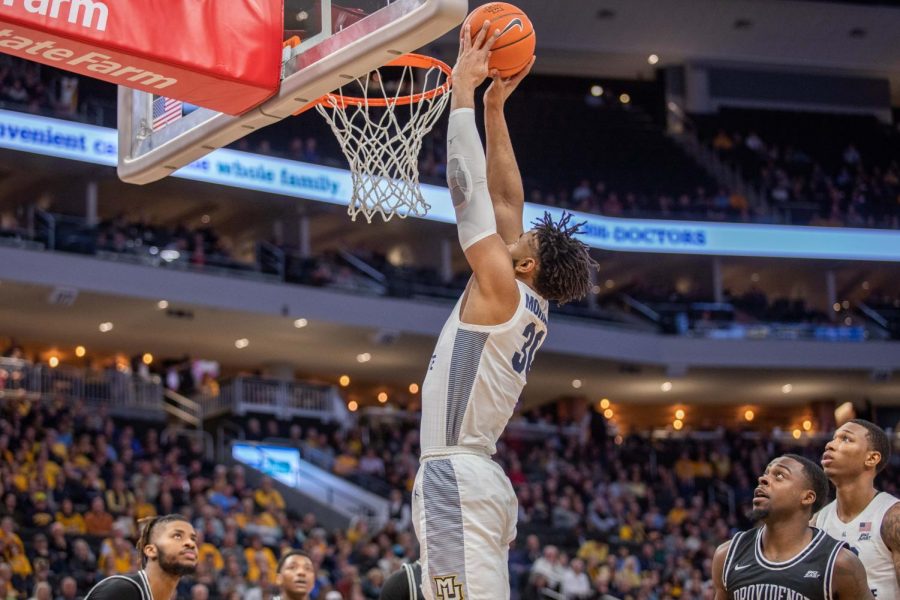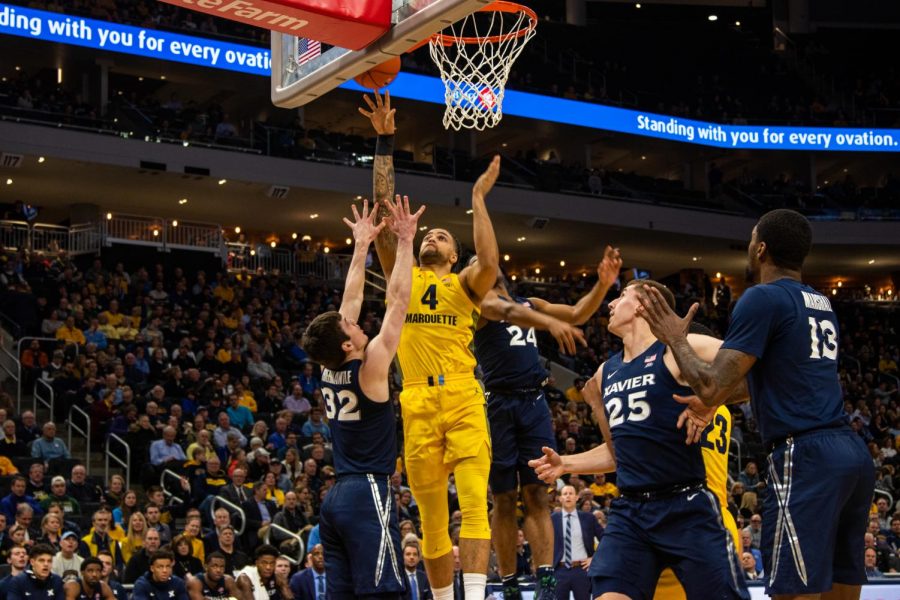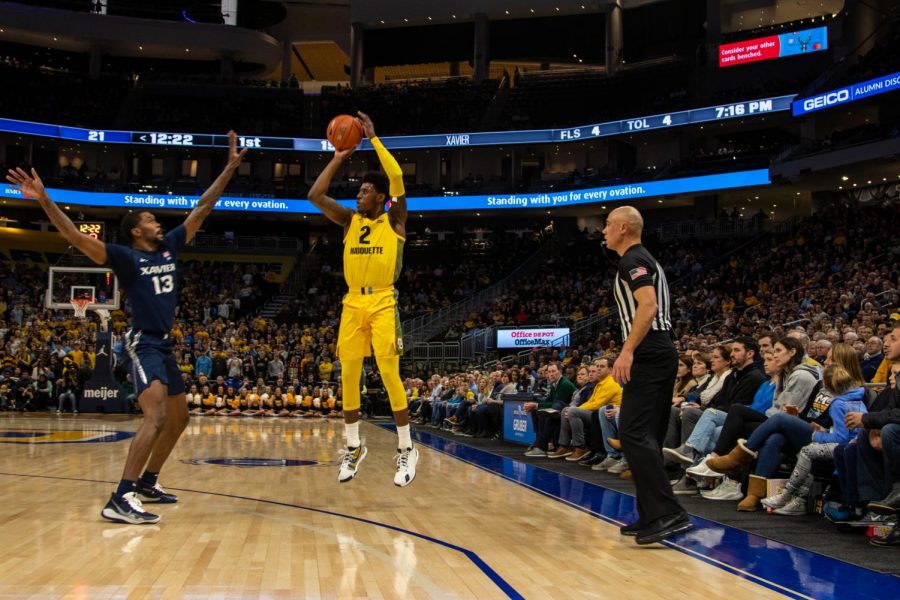With nine players 6-foot-7 or taller, six players 6-foot-8 or taller and five players 6-foot-9 or taller, the Marquette men’s basketball team has newfound depth at the post, a luxury the team has not had in head coach Steve Wojciechowski’s first four years at Marquette.
At one point last season, the team only had eight eligible scholarship players available due to injuries. That number has increased to 13 this season, with most players having another year of college basketball experience under their belts.
Wojciechowski suggested the biggest impact of the depth lies far from Fiserv Forum at the Al McGuire Court.
“I think depth is really good, especially for practices,” Wojciechowski said. “You’re able to have really competitive practices, even if you have some guys bumped or bruised. Depth helps you the most in practice by creating high-level competition on a daily basis.”
On the court, the depth in the paint gives Wojciechowski more flexibility for in-game adjustments. He used foul trouble as an example, something that has affected the team in the past.
Last season against Purdue, Marquette was tasked with guarding 7-foot-2 center Isaac Haas. Marquette centers Matt Heldt and Theo John both fouled out, forcing Sam Hauser, who occasionally will play minutes at the shooting guard position, as the next man up against Haas.
“In terms of games, there are certain situations in which depth will help us,” Wojciechowski said. “You never know where foul trouble is going to be. You never know how certain matchups are going to be. Our depth gives us the chance to respond to different situations that the season will present us.”
Heldt, now a senior, said he believes the depth will be vital in limiting fatigue.
“We can throw a lot of different looks at teams,” Heldt said. “We can throw four different guys at the five position. It takes pressure off of us because we can substitute more and be fresh. Now we have a lot of versatility at the center position, whereas we used to have only one or two guys.”
The Golden Eagles ranked 330th out of 351 teams in rebounding last season. The addition of Ed Morrow, a 6-foot-7 power forward who transferred from University of Nebraska, should help with that lacking statistic. Morrow led the Cornhuskers with 7.5 rebounds per game and had a career high of 18 rebounds in a single game.
“I feel we have a great group of bigs,” Morrow said. “We compete on a daily basis. Rebounding is something we’ve been keying in on, and that’s our responsibility to make sure improvement happens. That said, it has to be five guys as a unit rebounding, so the guards, too.”
One caveat that comes with having a stockpile of talent is the division of minutes among players. Junior forward Sam Hauser said he does not mind the issue as long as everyone buys into the system.
“It’s going to help us a lot offensively and defensively,” Hauser said. “We have a lot of guys competing for minutes, which is a good problem to have. It also means we’ll have to have guys buy into certain roles. That’s the key to buy into it and do whatever the team needs to win.”
Last season, the backcourt tandem of guards Markus Howard and Andrew Rowsey accounted for more than half of Marquette’s total points per game. This, in turn, allowed opponents to key in on the two guards which made getting open looks difficult at times.
With a new look to the post positions, Howard said he is excited for the increased versatility on the offensive end.
“I think we’re going to be able to score from a lot of different areas,” Howard said. “Sam, Joey, Brendan, Ed and Theo are all evolving in terms of how they play on the offensive end. I think we’re going to be able to have multiple double-digit scorers every game which is going to be really good for us to have multiple options on the court. We won’t be as predictable to guard.”

